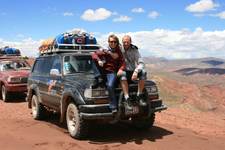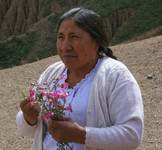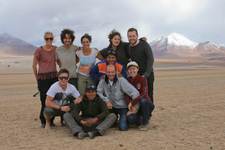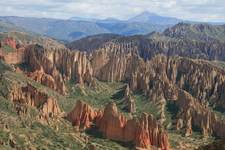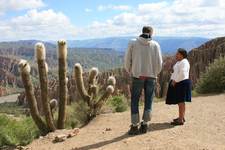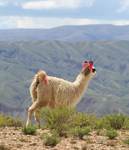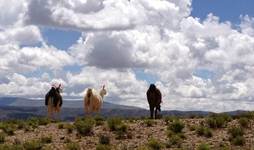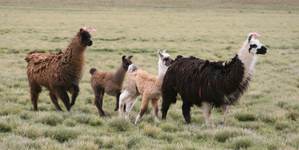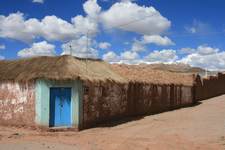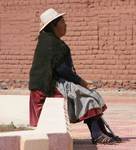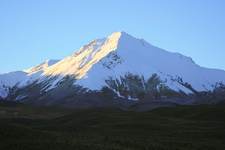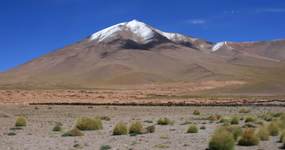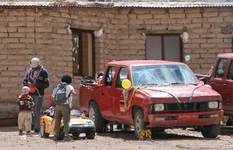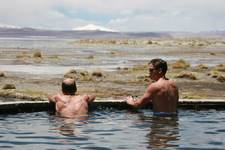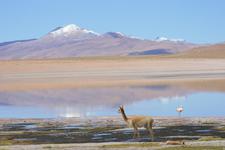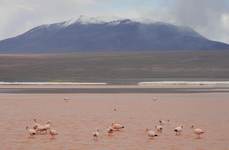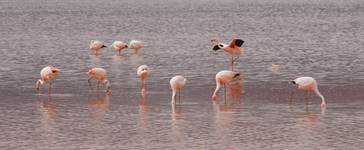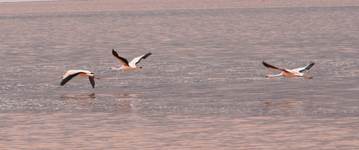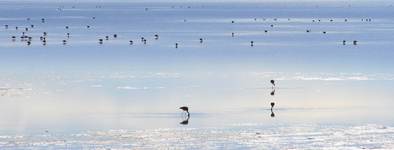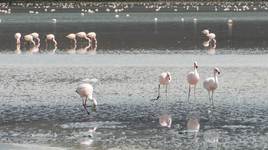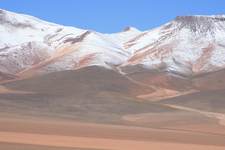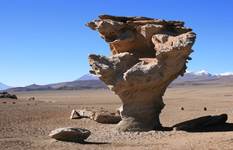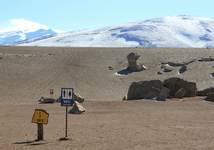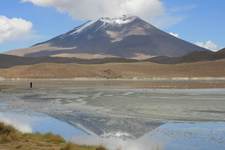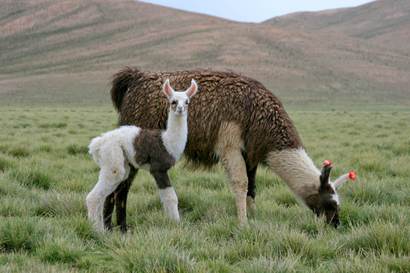
This is how we began visiting Bolivia. Our starting point was Tupiza – a small town located near the border with Argentina. This was at the altitude of about 3000 m. During the next four days we went only higher.
There are many ways of visiting the area of Salt Flats located in the south-west of Bolivia but the most popular, and probably the easiest one, is to go on a 4x4 trip with one of the local tour agencies. You can choose two-, three-, or four-day tours depending on your time and budget. We decided to take the longest option with the Tupiza Tours agency, which we strongly recommend. By the way, it’s better to start this trip from Tupiza and finish in Uyuni and not the other way around. It is less crowded that way.
In Tupiza we’ve met our Bolivian guides, the cook who spent all four days with us preparing the traditional Bolivian food, and six other travelers from Italy, France, Spain and Australia. We packed all our backpacks on the roof of the two 4x4’s, took a few bags of coca leaves to chew on in order to avoid sorocho (the altitude sickness), and off we went!
During the whole trip we drove at the altitude of more than 4000 m. The highest point we reached was 5000 m and it was snowing there! It took us a while to get used to the heights. At first we were losing our breath after a few minutes talk! Yes, at this altitude you realize that you need to breath when you talk and when you talk fast it may happen that you lose your breath. After a 2 minute walk up a small hill your heart is bumping against your chest suggesting you quite intensely to slow down or even better to stop. Your head feels as if someone put something around it and pressed with all its might. Some people have also stomach problems and difficulties sleeping. It’s bad if all symptoms hit you at once, but it seldom happens so it’s just the first day or two that you feel weird and then it goes away. At least this was our case. And how to prevent sorocho? Drink a lot of water, chew on coca leaves and think about something else.
The road on the trip was not easy as it was very sinuous, but it was beautiful! We drove through a scenery which changed every hour. We’ve seen dormant volcanoes (Uturuncu, Licancabur and Caquella) mountains covered with snow, geysers, colourful lagoons (Morejon, Hedionda, Colorada and Chulluncani) with thousands of flamencos, rocky desert (Desierto de Salvador Dali), green highlands with hundreds of lamas (and a few donkeys!), salars and much more! What impressed me much was the great space everywhere. Wherever you looked it was only nature around. I love such traveling!
We spent our first night in San Antonio de Lipez – a small village situated in the middle of nowhere at the altitude of 4200 m. It had just a few houses of which one was dedicated for tourists. The beds in our room were made of stone-bricks, there were no showers and only cold water in the tap. The temperature at night reached around 0 degree Celsius and there was frost on the cars in the morning. Of course, there was no heating in any part of the building we slept in. By the way – it was in February so during Bolivian summer. I don’t want to imagine how it is in winter…
To be fair I must admit that we knew about the standard of accommodation before we started the tour so this was no surprise to us and we came prepared. We somehow survived our first night dressed in all warm clothes we had and covered with our warm sleeping bags. Luckily the night was not too long as we had a wake-up call at 4.30 am.
There was one amazing thing we saw around 5 am before going on with our trip. It was the sky covered with millions of stars shining so brightly as if someone plugged them into a strong source of energy. It looked like a good spectacle in a modern planetarium where at the end they show you all the constellations visible in the hemisphere. It was spectacular! Such a sky is possible to be seen only in places which are far away from any sources of artificial light. San Antonio de Lipez at 4200 m was one of them. Great that such places still exist!
